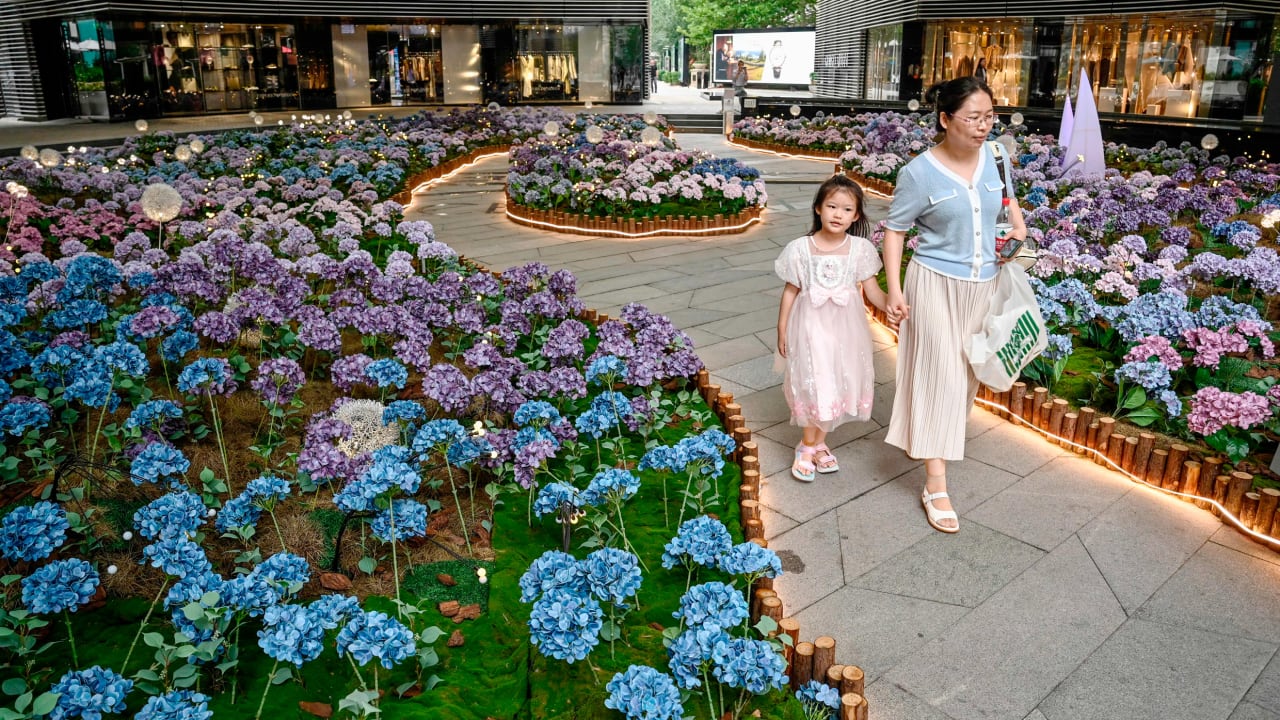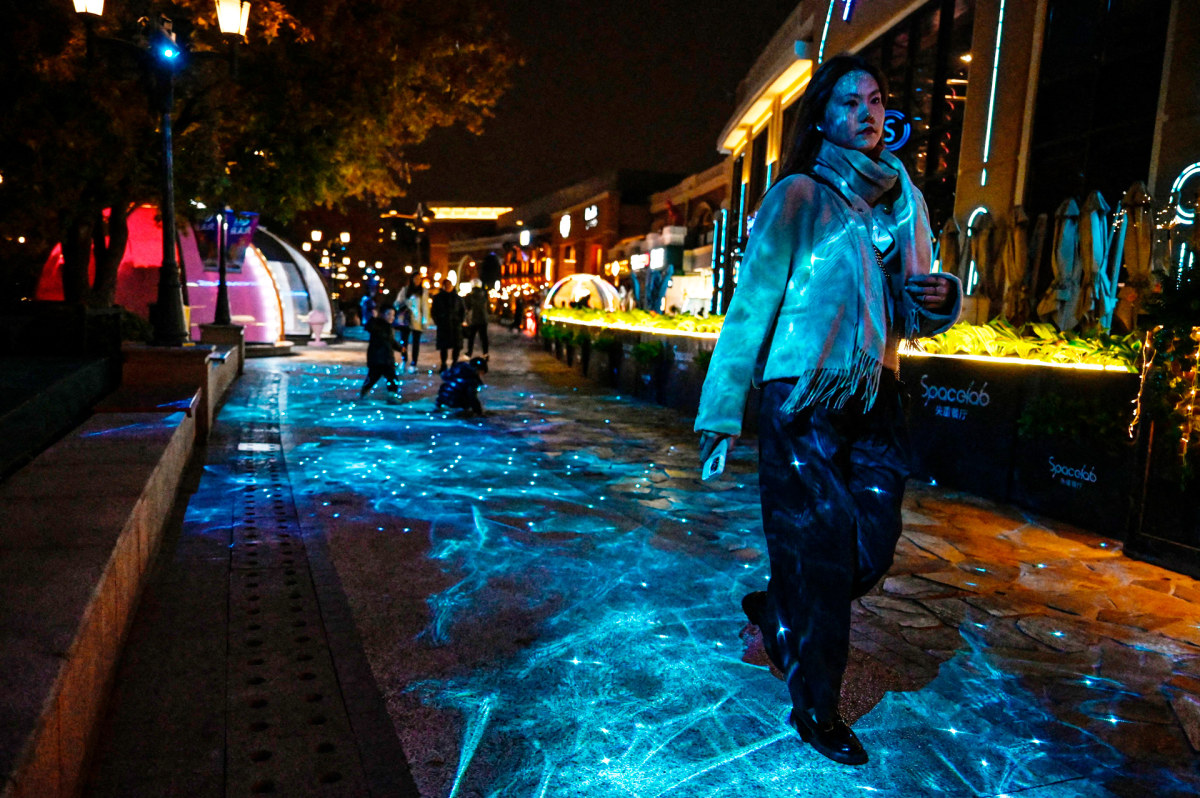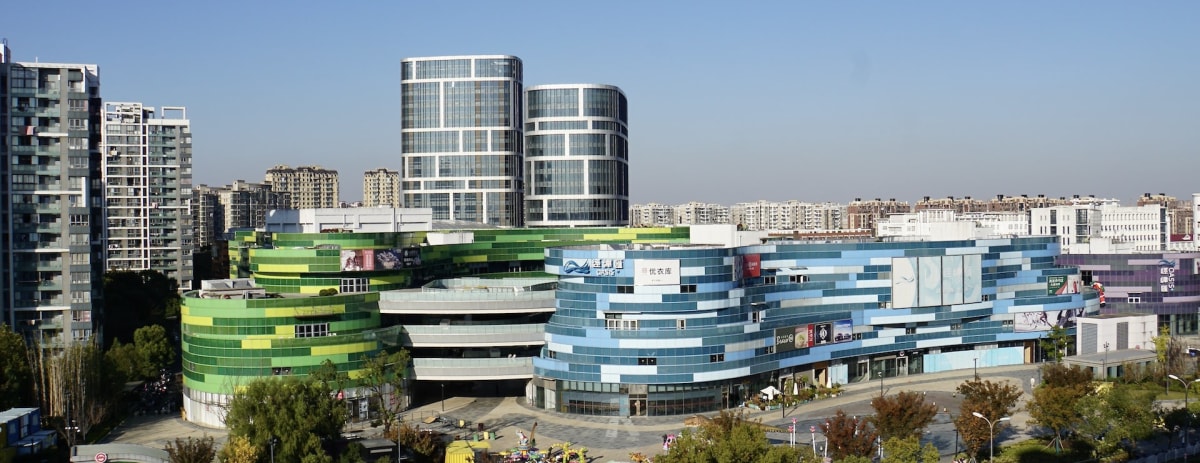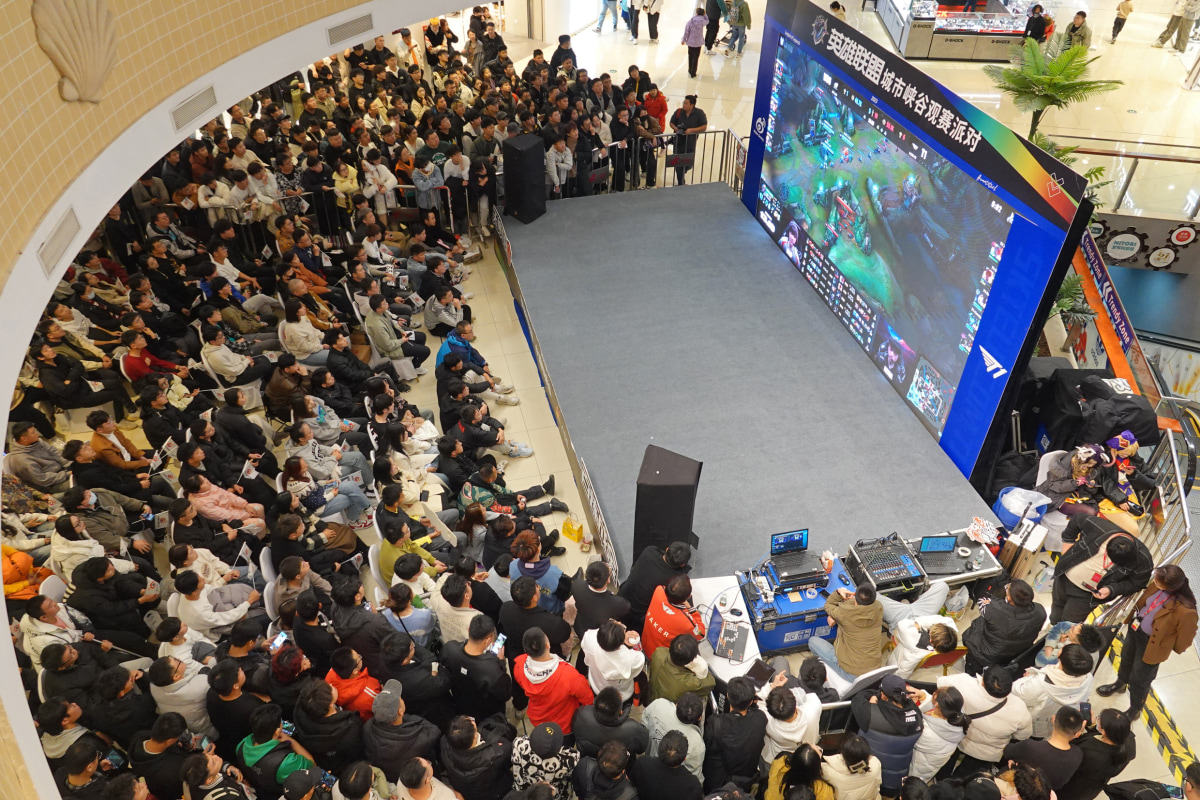China’s clever plan to save its dying shopping malls

On a recent research trip to China, I wandered through the Oasis Mall in suburban Shanghai. Like many Chinese shopping centers, this complex was filled with empty stores that reflected the end of China’s 30-year-long economic expansion. But there were surprises as well.
Along a stretch of the mall’s interior walkway, a cluster of parents and grandparents sat on chairs. They were looking through a plate glass window, watching a dozen 5- to 7-year-old girls practice ballet steps, carefully following their teacher’s choreography. A space initially designed for retail had been turned into a dance studio.

People walk under a light projection at a shopping mall in Beijing. [Photo: Jade Gao/AFP/Getty Images]
From 1990 through 2020, large, shiny shopping malls embodied China’s spectacular economic growth. They sprouted in cities large and small to meet consumer demand from an emerging middle class that was keen to express its newfound affluence. These centers look familiar to American eyes, which isn’t surprising: U.S. architectural firms built 170 malls in China during this period.

The Oasis (blue building) is one of some 6,700 shopping malls in Chinese cities. Hundreds of new centers open yearly. [Photo: John Rennie Short, CC BY-ND]
Like their U.S. counterparts, many Chinese malls have fallen on hard times. The COVID-19 pandemic and the rise of online shopping have devastated foot traffic, leaving the nation with a huge overhang of retail space. But many Chinese malls are being reimagined by owners and users as palaces of experience—civic areas for communities to meet and interact, with new configurations of public and private space.
Today, approximately 350 million Chinese—25% of the total population—can be considered middle class. More recent economic growth has generated growing income inequality that now is equivalent to U.S. levels.
Malls became a motif of modernity during the country’s economic expansion. They offered consumers year-round protection from heat, humidity, cold, and frost, as well as from busy streets and polluting traffic. Malls were safe environments where the steadily increasing numbers of more affluent Chinese families could shop and eat, stroll and meet.
Over the past 30 years, China’s malls have faced economic booms and slumps. For example, the New South China Mall in Dongguan—which is twice the size of Minnesota’s Mall of America, its largest U.S. counterpart—opened in 2005. But most of its 2,300 storefronts remained closed for more than a decade as China fought off recession after the 2008 world financial crisis.
As a result, Chinese media reports abound with stories about well-known stores and venerable malls closing. In China, as in the U.S., what scholars once described as the “magic of the mall” has become an “allure of ruins.”
Malls with Chinese characteristics
But the Chinese are making creative use of excess mall space. New users are filling nonretail areas, such as indoor walkways and atriums that now house café tables. Others have become children’s play spaces filled with giant inflatable figures. The Raffles City Mall in Shenzen has a rooftop pet playground, a stage, an art display area, and a sun-shaded lawn.
China’s informal economy of food stalls and sidewalk merchants is also filling the void. Although street vending has a long history in China, government officials sought to suppress it in recent years, calling it unsanitary and a throwback to premodern times. Now, however, they are encouraging it as a way to reduce growing unemployment, especially among young people, which currently exceeds 20%.
During my trip, I saw small-scale entrepreneurs selling produce, street food, and crafts in mall parking lots and around public entrances. The distinction between public and private spaces is being reconfigured as vendors set up stalls in areas that once were open space.

People at Joy City Shopping Complex in Yantai, China, watch a live broadcast of the 2023 League of Legends world championship final in November 2023. League of Legends is a multiplayer online battle arena video game. [Photo: Tang Ke/VCG/Getty Images]
I see these experiments as a shift in the meaning of the mall. What began as a cathedral of retail consumerism is becoming a place where people can connect and enjoy individual and collective experiences that aren’t available online.





